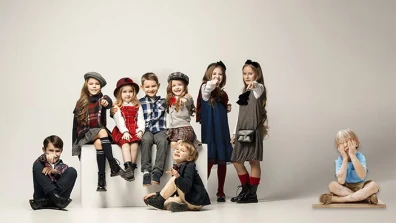The world of colors is welcoming and captivating in which designers and artists exert their brushes to craft a stunning masterpiece of shades. Appealing to us with its charm and vibrancy, one colour stands out in this mixture and display that is magenta.
In this article, we will deliberate on the secrets behind this fascinating colour so that you can learn the outlook of magenta hue and also the art "how make magenta" from scratch.
Thus, whether you are a curious soul or an aspiring artist, you will learn a lot from this article where we will unearth the alchemy that has given rise to magenta.
Table of Contents
- How Colour of Magenta Looks Like
- History of Magenta Colour
- Magenta Color and Astronomers
- Social Effects of Magenta Colours
- Making Magenta Colours and Shades
- What Color is Magenta?
- Color of Viva Magenta - 2023
- Overview of Color Models
- Qualities of Magenta Color
- Process to Make Magenta Colour
- Step-wise Process to Make a Magenta: -
- Conclusion
- Frequently Asked Questions
How Colour of Magenta Looks Like
An enthralling combination of two primary colors i.e., red and blue, magenta has captured the attention of creative minds and intrepid souls for centuries. Although the process of making magenta is somehow complex and time-consuming the result is always pleasant and appealing.
Magenta is one of the most visually striking colours to ever grace our eyes. It appears in the form of a deep purple or dark pink shade. Our modern world is filled with this colour, but if you look back for a few centuries, you will see this colour nowhere.
Knowing which colours if combined together would create magenta pigment is fairly up-front, but it may not be as easy to locate the necessary resources as we might like to believe.
History of Magenta Colour
The history of the colour magenta is worth mentioning, which provides us with two different versions of its origin. The first one was when synthetic magenta colors were being introduced which is associated with the origin of the name magenta itself.
However, let us examine how our ancestors found this beautiful colour in the natural world.
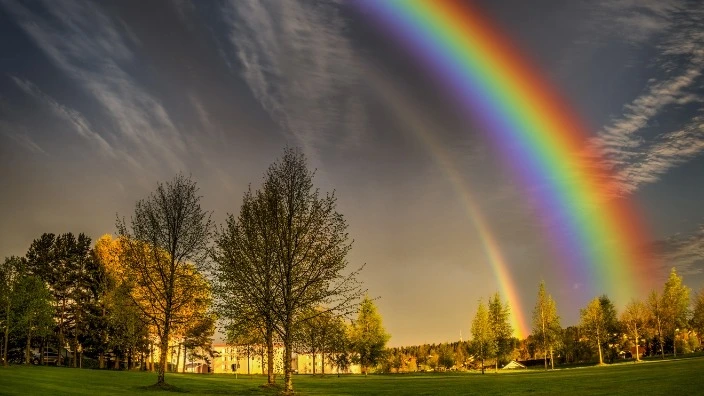
Although magenta pigment is not easily available in physical nature because of its peculiar nature and means of formation, it can still occasionally be found.
It can be found in some lilies and roses as well as on Andean flamingos, reef fish, certain types of dragonflies and coral formations near the Persian Gulf. It may sometimes be witnessed between double rainbows.
Magenta Color and Astronomers
Astronomers have also discovered that when mass absorption of sodium and potassium atom in spectral class T brown dwarf stars takes place, they change colour from white to magenta, which can easily be traced.
It was in the middle of the 19th century that an infamous French chemist, François-Emmanuel Verguin, first synthesized magenta after which people started using it regularly as a matter of uniqueness and preference.
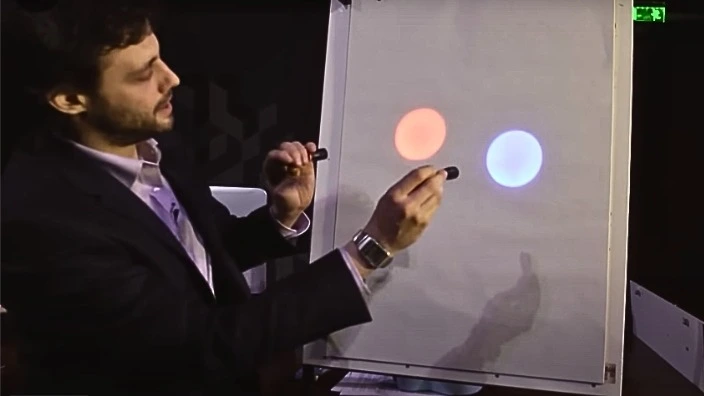
As the demand for bright and vivid colours grew with the passage of time, in the textile industry, Verguin made efforts to develop a new colour pigment. His efforts bore results and he discovered what colors are combined to make magenta.
Fuchsine was a vibrant colour and it did not fade easily when exposed to sunlight. These characteristics made it a significant development in the textile industry in the mid-nineteenth century. However, it did not get its name ‘magenta’.
In today’s world, the colour magenta is frequently associated with kindness and love. Moreover, artists have found a deep connection with this colour and have attached strong emotions to it which is why we can witness its widespread use in a myriad of art forms like design, paintings, films, and fashion.
It is generally described in a positive way. These differences in perceptions by different people can be explained when we consider that magenta pigment is the combination of two colours i.e., red and blue.
The color red represents strong emotions like anger, passion, and love while the color blur is often associated with peace, tranquility, and intelligence.
A combination of these two colours thus results in a dynamic and emotive colour called magenta. It has numerous shades some of which are worth considering. Below, a nuanced explanation of the colour magenta will be undertaken.
Making Magenta Colours and Shades
Keeping in mind the interesting gradual history of the creation of magenta, you might be wondering how you can accomplish the creation of this fascinating colour.
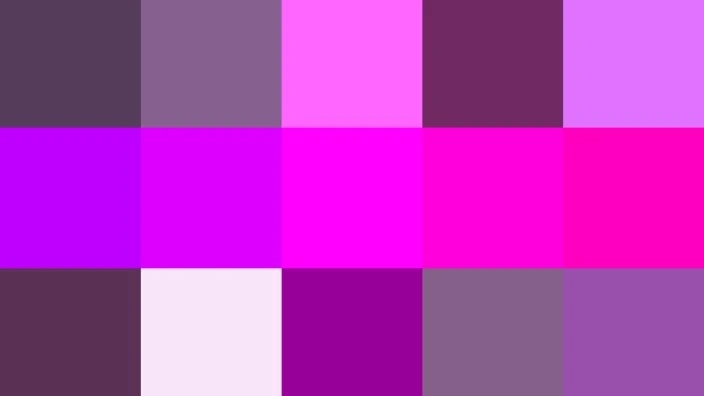
First, it is essential to understand that magenta has a wide spectrum which is why it has various shades. Whether you consider it for a creative venture, a fashion design, or simply to know its profundity, magenta hue exists in multiple shades.
In this article, we are supposed to look at some of the shades of magenta, which are most popular because it would be highly impractical to list its tones. These are as follows: -
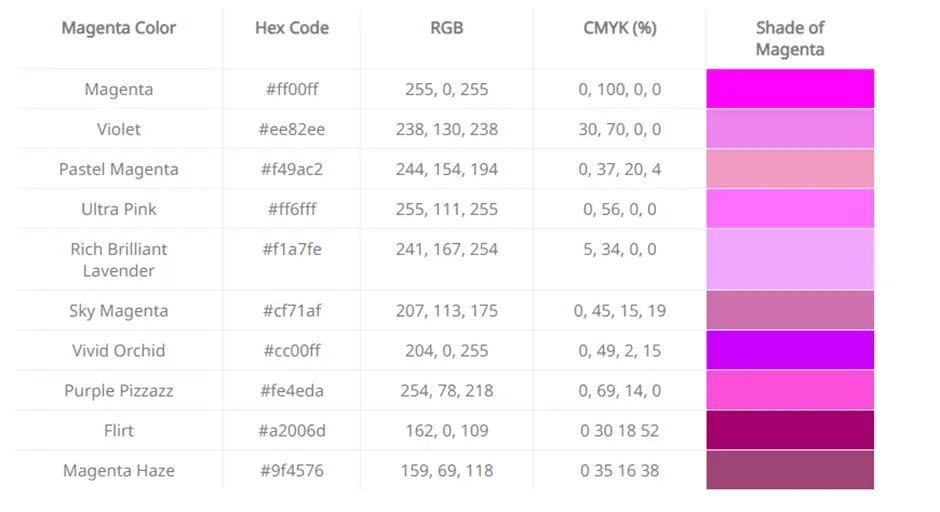
The above table clearly depicts that magenta is a strong, lively, and vibrant color which exists in numerous shades, from purplish to mute to bright pink. Paler or more pinkish shades of magenta, particularly pastel pink, are associated with love and romance.
These shades represent delicacy and feminine energy which makes them ideal for including coziness and sweetness in any attire or setting.
Diverse Effects of Color Shades
On the other hand, richer and more saturated shades of magenta exhibit more energy, vitality, and forcefulness. Since it is a bold colour, it can easily draw attention to itself because of its bright and electric tones.
Such tones are commonly used in different art forms and all media to draw attention to posters, paintings, or clothing. Contrarily, richer and darker shades offer more elegance and thus radiate a sense of intrigue and mystery.
However these days magenta pigment paint is also in trending for some parts of the houses. For the detailed description of magenta paint, existence of lead in the paint and its outlook access the article How to Identify a Lead Paint.
Now, we will discuss what color is magenta, where it lies in the color spectrum, where it is situated within color models, and lastly how it can be made.
What Color is Magenta?
In our daily lives, seeing the color magenta can be surprising because the natural world is largely painted in natural tones like greens, greys, and browns. It is why magenta stands out from the rest of the colors when found in nature because of its brightness as compared to the surroundings.
If an average person is asked “What color is magenta?” the answer will typically describe it as a bright, vivid pinkish-purple color. To get an idea of the color magenta and what it look like in real life, you can try to visualize a flowers bouquet.
Many flowers found in the natural world have petals which exhibit shades of pink such as roses and lilies. This color is very much similar to magenta as it is a combination of red and blue pigments that are contained in flower petals.
When blue and red colors are combined, our brain sees them as magenta. It can be reasonably assumed that magenta lies somewhere between red and blue colors. However, to understand the color magenta better, it would be suggested to know the color models which are fundamental to magenta (any color, for that matter).
Color of Viva Magenta - 2023
The color ‘Magenta’ represents universal love at the highest level. It advocates kindness, compassion and cooperation with the attributes of self-respect and contentment.
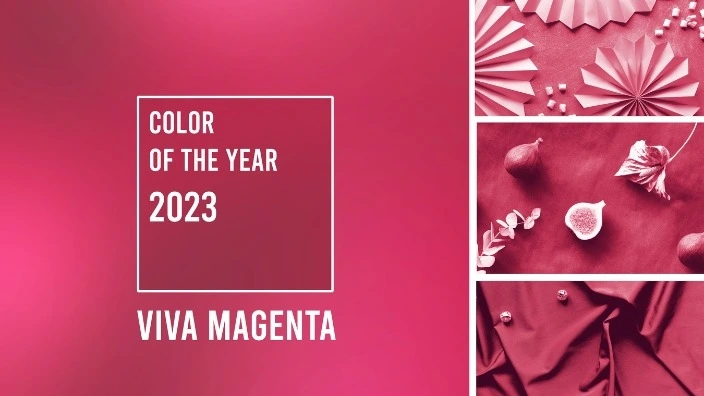
There is absolutely no question that the color ‘Vivia Magenta'; is sacred or lucky one for the running year i.e. 2023 rather the color of ‘Viva Magenta’ color has been found the most fascinating color of the year, which shows power and empowerment.
As per findings of the Pantone color institute; Viva magenta is the color of the year as it shows brevity and fearlessness, promotes freedom and optimism.
Making Viva Magenta Color
To make Viva Magenta color in 2023, you will need magenta dye or paint, a mixing container, a stirring tool, and a base material (e.g., fabric, paper).
However, the method of making it involves the following steps: -
- Start by preparing your base material and ensure it is clean and dry.
- In a mixing container, pour the magenta dye or paint to move forward.
- Add a small amount of white to the magenta, stirring continuously, until you find shade of Viva Magenta.
- Test the color on a small, inconspicuous area of your base material to ensure it is perfect.
- Apply the Viva Magenta color to your base material using a brush, roller, or other appropriate method.
- Allow the material to dry completely before using or displaying it.
Overview of Color Models
We know that there exist several types and models of colors. There are primary colors which are combined to form secondary colors, and various combinations of these colors will deliver some tertiary colors.
There are numerous shades in the color spectrum like magenta which falls in the family of violet and pink. Here, we will discuss the different color models so that we can pinpoint where magenta actually lies.
RYB Model (Red, Yellow, and Blue)
In color theory, Red, Yellow, and Blue are the three primary colors which can be represented by an RYB model. When we mix any of these primary colors, we get secondary colors which are orange, violet, and green.
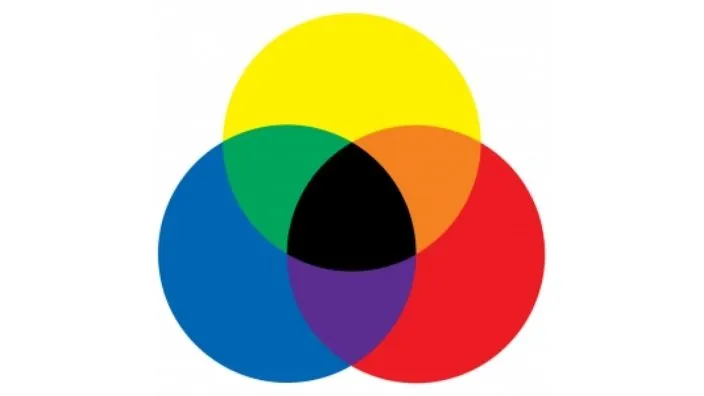
A combination of primary colors and secondary colors gives us what is called tertiary colors which are red-orange, red-violet, blue-violet, blue-green, yellow-green, and yellow-orange. The colors can be mixed in various forms to get different results. A color wheel can represent these colors. Remember, this color wheel does not contain all the colors.
For instance, shades and tones like black, grey, and white are not a part of this color wheel. Where does magenta falls in this color combination? Let’s find out below.
CMYK (Cyan, Magenta Yellow, Black)
Like the RYB model, CMYK (Cyan, Magenta, Yellow, and Black) is another color model in the color theory. The primary use of this combination/ model is in the field of printing.

Evidently, magenta is a part of this color model. Although magenta is a part of this color model, it can also be formed by a combination of two colors in what is another color model in the color theory i.e., the RGB model.
RGB (Red, Green, and Blue)
RGB model in color theory consists of three colors that are red, green, and blue. These can be combined to form different colors. RGB model is most commonly used in video displays, TV, and computers, etc.
In this color model, magenta is present as a secondary color which is produced as a result of mixing red and blue paint.
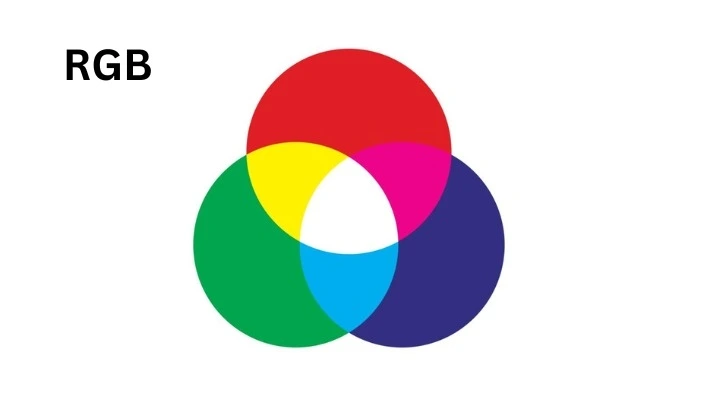
Instead of using physical color pigments, the RGB color model employs colored lights. From the above image, it has become obvious that when red and green are combined; yellow color is formed; likewise cyan from the combination of blue and green; and magenta in result of red and blue.
Qualities of Magenta Color
Making magenta color involves a creative process; that is liked and enjoyed by many people. With some knowledge and practice, a perfect shade of magenta can be created easily in no time.
Having determined the fact that the merger of blue and red forms color magenta, so, it would be better to understand them and consider some characteristics, qualities, and significance of this color.
Selection of Colors
Regarding the selection of red color; it can safely be added that the color red is commonly used in design and fashion industries because of the fact it conveys a sense of attraction and sensuality due to its alluring and seductive attributes.
A strong correlation also exists between the red color and feelings of anger, passion, and aggression. It has been revealed in many research studies that the red color has the power to increase heart rate.
This color is also used to convey stuff like warnings which is why we often see red color on stop signs or the hazards indications. It is because the red color portrays urgency and grabs attention easily.
The Blue Color
The blue color shows a sense of calmness and peace which is why it is commonly associated with a variety of good feelings and positive emotions. In all of these associations, the feeling of peace is the most frequent.
The color blue is not commonly found in our physical surroundings, but it can be most frequently seen in the skies and oceans, both of which exhibit depth, vastness, and sheer benevolence. Due to these qualities, the color blue is closely associated with prudence, intelligence, and wisdom.
Consequently, it is commonplace to see blue paint in educational institutes and offices as well as in fashion schools around the world.
Process to Make Magenta Colour
Answering to the core of the question qua making of magenta color and paint is that it has been found that with the combination of the two colors i.e. Red & Blue, we can make magenta.
As both colours have diverse and divergent characteristics, magenta portrays a wide range of feelings and emotions. We will witness dramatic changes in these emotions if we navigate the rich variety of magenta tones.
Magenta can also be created from the following paint color combinations: -
- Cadmium read and cobalt blue
- Crimson lake and ultramarine blue
- Crimson lake and quinacridone violet
- Quinacridone magenta and alizarin crimson.
If we analyze the work of different artists who have used magenta in their paintings, we can assess the feelings and emotions attached to it by seeing different shades of magenta. This makes magenta a captivating color which can calm us with its charm and elegance.
Use of the Color by Artists
Artists have been using this color in their paintings since 1890 when Paul Gaugin painted Woman in Front of a Still Life by Cézanne. We are supposed to have a look at the procedure of making magenta paint before we further dilate upon the making of color magenta.
There are various materials that can be used to make magenta, including acrylic paints, watercolor paints, oil paint medium, and other similar mediums.
In order to successfully merge the colors and create magenta paint, we will need to possess the necessary materials for making magenta. This is why knowing how to make magenta paint is close to how to make the magenta colour.
Step-wise Process to Make a Magenta: -
- Take some red paint and add a little bit of it to your palette. (If red paint is not available; make it by merging blue and yellow paint in equal quantity).
- Add blue paint in small portions to your palette where you have already put red paint. If you’re using ultramarine blue, add tiny amounts of it to the palette at a time as this intense color can overpower the red paint (If blue paint is not available; make it by mixing an equal quantity of red and dark green paint).
- Start mixing red and blue paints.
- Must notice and ensure that you’re properly mixing paints, different shades of magenta will be produced.
- You can darken your magenta paint by adding tiny amounts of black or dark green to it, as green is a complementary to magenta. Contrarily, you can lighten your magenta by adding white paint to it.
- You will get your desired tone of magenta where you should stop mixing paint.
Some Alternatives: -
- You can also make magenta by mixing permanent rose and ultramarine blue. Permanent rose is pinker than color magenta, so, adding blue will make it fit to the magenta family.
- Quinacridone magenta paint is nearly indistinguishable from quinacridone violet. If you add clear gesso or white paint to quinacridone violet, it’ll remain closer to dark violet.
- So, it’s recommended to mix quinacridone violet with red, or cadmium red paint if you’re working with clear gesso, or white.
Conclusion
Magenta is a captivating color which can hypnotize us with its attractive charm and appealing magnetism. In this article, we have revealed the processes behind the creation of magenta color or paint.
In order to uncover the entire scheme of ‘how to make magenta’ color or paint, we have delved into the stunning world of colors and shades.
Magenta has been proved to be a fascinating mixture of blue and red colors which has enchanted creators and artists for centuries. The history of magenta is also exciting considering its evolutionary journey.
By using magenta, inquiring personalities and ambitious artists can undertake their creative ventures to give their work a vibrant allure and charm. So, let us continue with the exploration of limitless possibilities of the world of colors.
Frequently Asked Questions
What colors make up magenta?
Mixing the primary colors of red and blue will make magenta, a secondary color. However, shades of purple and red or pink and purple can also make magenta, if the exact ratio is blended.
Can you make magenta with red, yellow, blue?
If you combine the questioned three colors, would result in making a white color. While if you combine red and blue, you get cyan or green. However, if you mix red and blue color that would create true magenta.
Is magenta a pink or purple?
It is like a pinkish-purplish- red color. We can say that the color magenta is the intense form of pink or purple. Therefore we get confused with pink or purple color while holding some color as magenta.
What color is quinacridone magenta?
Quinacridone magenta color is deep violet-red color. It’s a synthetic bright-red color that creates bright tints, and in mixtures creates beautiful transparent violets. quinacridone magenta is a primary red with vibrant tinting strength.


















